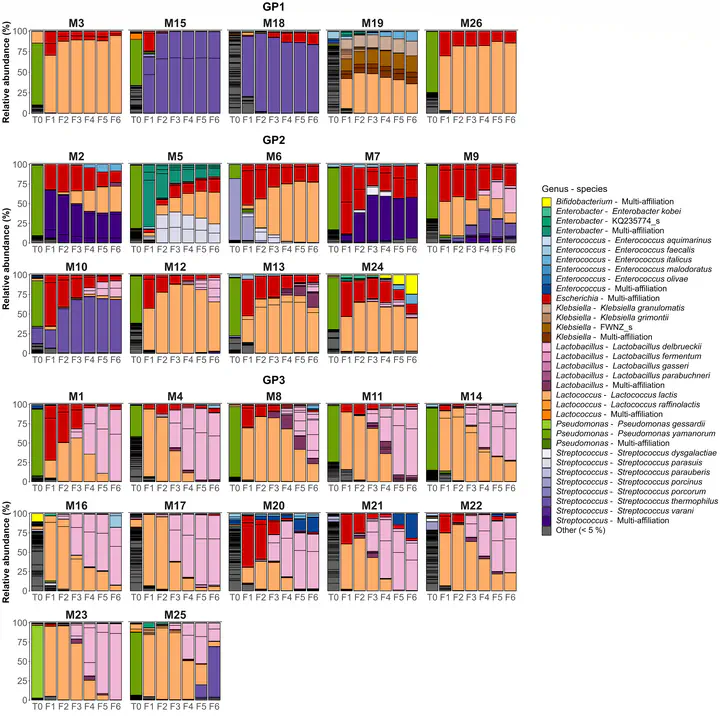Serial fermentation in milk generates functionally diverse community lineages with different degrees of structure stabilization

Abstract
Microbial communities offer considerable potential for tackling environmental challenges by improving the functioning of ecosystems. Top-down community engineering is a promising strategy that could be used to obtain communities of desired function. However, the ecological factors that control the balance between community shaping and propagation are not well understood. Dairy backslopping, which consists of using part of the previous production to inoculate a new one, can be used as a model engineering approach to investigate community dynamics during serial propagations. In this study, 26 raw milk samples were serially propagated 6 times each, giving rise to 26 community lineages. Bacterial community structures were analyzed by metabarcoding, and acidification was recorded by pH monitoring. The results revealed that different types of community lineages could be obtained in terms of taxonomic composition and dynamics. Five lineages reached a repeatable community structure in a few propagation steps, with little variation between the final generations, giving rise to stable acidification kinetics. Moreover, these stabilized communities presented a high variability of structure and diverse acidification properties between community lineages. Besides, the other lineages were characterized by different levels of dynamics leading to parallel or divergent trajectories. The functional properties and dynamics of the communities were mainly related to the relative abundance and the taxonomic composition of lactic acid bacteria within the communities. These findings highlight that short-term schemes of serial fermentation can produce communities with a wide range of dynamics and that the balance between community shaping and propagation is intimately linked to community structure.